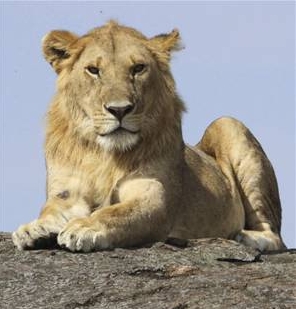Poison and Policy: Reversing the Extermination of Kenya’s Lions

 |
| King of the jungle under threat Photo courtesy |
Since the 1970s, Kenya has lost about half of its total wildlife populations. In recent weeks a string of reports has highlighted the rapid decline of perhaps the most iconic of all Kenya’s wild animals: the lion. In August, researchers from the governmental Kenya Wildlife Service reported that Kenya is losing about 100 lions each year, and now only has 2,000 lions left in the country. At that rate lions might disappear from most parts of the country within the next 10 to 20 years.
The cause of the rapid decline of the country’s lion population is conflict with people in rural areas. Lions eat livestock and occasionally kill people. Lions represent a threat to people’s lives and livelihoods, and locals retaliate by killing lions. Back in March, the popular American television news programme, 60 Minutes, ran a feature on the widespread use of a pesticide called Furadan to poison lions throughout the Kenyan countryside. While the 60 Minutes episode led to an active campaign to have Furadan taken off Kenya’s shelves in order to save lions from poisoning, the root causes of current lion declines are linked to Kenya’s wildlife conservation policies.
The central problem relates to the economics of living with lions in rural areas. In Kenya less than 10% of the land is enclosed in state protected areas such as national parks and reserves. Most lions either live on private lands or regularly range outside park boundaries into those areas. Lions’ carnivorous nature makes them inherently costly to their human neighbours, which creates incentives for people to kill lions in order to safeguard their own well-being and economic interests.
Although lions are costly to local communities and private landholders who raise livestock, these renowned predators are also very valuable economic assets. Economists have estimated the value of a single male lion in Amboseli National Park in relation to tourism activities at over $500,000 during the course of the animal’s lifetime. More recent estimates suggest that Kenya’s remaining lions may be worth over $30 million annually in total. Certainly, lions are a foundation of a national tourism industry that accounts for up to 10% of Kenya’s GDP.
The fact that lions support lucrative flows of revenue and economic activity, yet are rapidly disappearing from Kenyan landscapes represents what economists call a ‘market failure’. The marketplace, as currently structured, does not translate lions’ economic value into incentives for their production- hence their widespread decline. At the root of this market failure is the reality that the beneficiaries of lions- mainly the government and private companies such as hotels, airlines, and safari outfitters- do not control the production or maintenance of lion populations. Rather, the status of lion populations is effectively determined by the rural landholders and communities who live alongside lions. Those landholders, however, are not the principal beneficiaries of the tourism industry and do not capture most of the revenue that lions generate. As a result, local people generally have incentives to exterminate lions rather than producing or conserving them.
The same market failure underlying lion declines also accounts for the overall decline of wildlife across Kenya. The basic problem is that local landholders who control wildlife’s fate outside of relatively small parks and reserves generally are not capturing the economic value of wildlife, and thus prefer to see wildlife disappear.
During the past twenty years, Kenya has witnessed a vigorous debate about reforms that might address this fundamental policy problem. While nearly all observers agree on the need to enhance local benefits from wildlife, beyond this general consensus Kenyan wildlife policy debates have been mired in acrimonious gridlock. The most contentious issue has long been the reintroduction of safari hunting, which can potentially provide strong incentives for local landholders to conserve lions and other wildlife where rights to make decisions about wildlife use are secured at the local level. Hunting is also, though, often subject to mismanagement where corruption is widespread or management institutions are weak.
Given the unlikely prospects for consensus on major policy reforms or the status of hunting in Kenya any time soon, alternative measures are urgently needed for Kenya to address the decline of lions and other valuable wildlife species. One potential solution that should be able to garner broad support would be developing local lion ‘bounties’. Bounties were traditionally used in many areas in the past to create cash incentives for hunters to kill predators which, decades ago, governments sought to exterminate in order to protect people and livestock. Today we need bounties not to exterminate wild animals but to save them, using the basic economic principle of a bounty to a very different end. Payments could be made to local communities and landholders that can demonstrate the presence of lions on their individual or communal properties. Conservation organizations in other parts of the world are already using such arrangements to reward local landholders for conserving predators such as snow leopards and jaguars. While these conservation ‘bounties’ would be costly, the high economic value of lions, as well as their aesthetic value to millions of people around the world, should make such systems feasible. Development of these kinds of innovative mechanisms that reward local people for living alongside lions are urgently needed before the King of Beasts vanishes from Kenya’s landscapes.
By Fred Nelson.
Fred Nelson has worked on conservation policy in East Africa for over ten years and is the director of Maliasili Initiatives Ltd.
